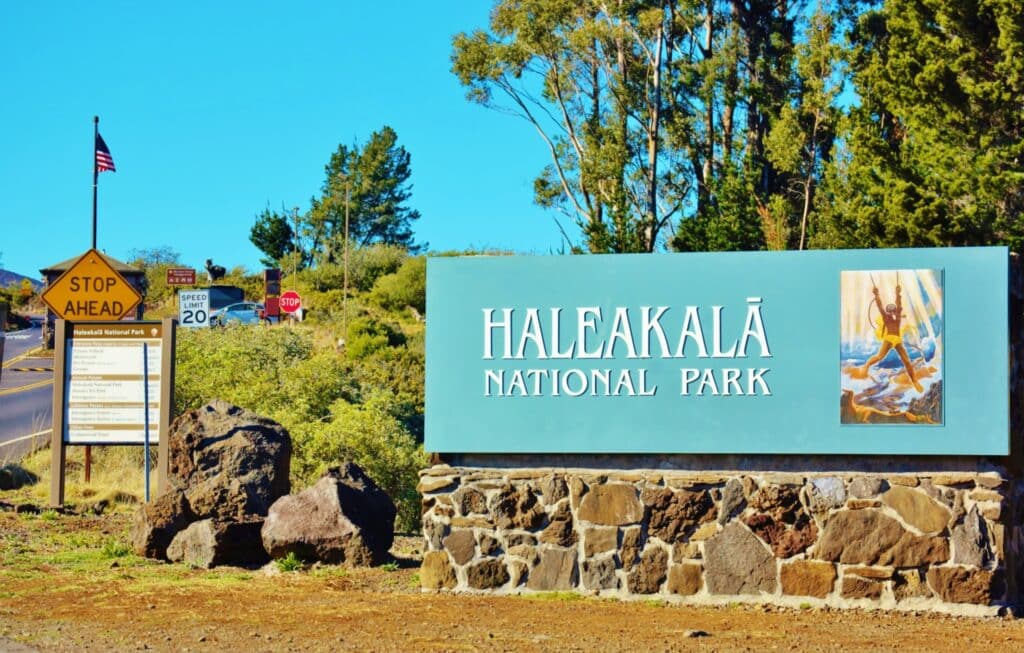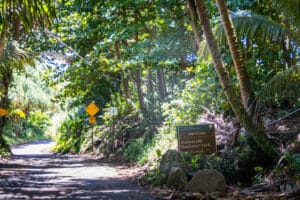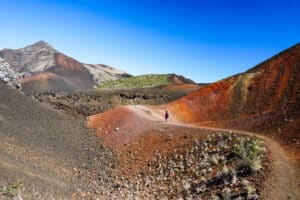
Haleakala National Park’s current entrance fee is $30 per vehicle, which covers all passengers in a private car and is valid for three days (applicable to both the Summit and Kīpahulu districts). Motorcyclists pay $25 for a 3-day park pass, and individuals on foot or bicycle pay $15 per person for 3 days. Children 15 years old and under enter free of charge. If you plan to arrive very early for the famous sunrise, note that entry between 3:00 am and 7:00 am requires a $1.00 sunrise reservation (per vehicle) booked in advance. The park itself is open 24 hours a day,year-round, including all holidays, so you can explore at any time of day or night. There are no seasonal closures, although occasional hazards (like rockslides after heavy rain or rare snow/ice at the summit in winter) might lead to temporary area shutdowns. Also, during the summer dry season, campfires are sometimes restricted due to fire risk (portable camp stoves are usually allowed). We visited on 02 August 2025, and all figures were valid then.
Haleakala National Park Overview
Spanning from the 10,023-foot volcanic summit down to the ocean, Haleakala National Park protects an astonishing range of ecosystems and geology. The park covers roughly 33,265 acres (about 134.6 km²) of Maui’s southeastern region, including alpine cinder deserts, shrublands, and lush tropical rainforests. Established as part of Hawaii National Park in 1916, it was later designated a separate national park in 1961 to preserve its unique landscapes and species. (In fact, Haleakala was recognized as an International Biosphere Reserve in 1980 for it’s outstanding ecology.) The name Haleakalā means “House of the Sun” in Hawaiian – according to local legend, the demigod Maui lassoed the sun from this summit to slow its descent and lengthen the day. Little wonder the first light of dawn here has become world-famous.

An entrance road going to Haleakala National Park, Hawaii. Maui, HI
Is Haleakala’s gigantic crater at the summit really a crater? Geologically, it’s actually an erosional valley carved into an ancient volcano. The “crater” measures nearly 7 miles (11 km) across and 2,600 feet (790 m) deep, with a floor scattered by cinder cones from the volcano’s last eruptions over 400 years ago. We stood on the rim and felt like we were looking at another planet’s surface – rust-red cinder fields and black lava rock stretching out below. At this elevation, the air is thinner and often clear; we learned the summit is one of the best places in the U.S. for stargazing due to minimal light pollution and dry air. (There’s even a science observatory on a neighboring peak.) Looking out from the top, we could see the curve of Maui below and even spot neighboring Big Island’s peaks on an exceptionally clear morning.
Haleakala’s environment ranges from alpine desert to tropical rainforest, creating habitats for many rare creatures. The park’s high-altitude cinder slopes are home to the Haleakala silversword,a succulent plant with dagger-like leaves that glisten silver. This otherworldly plant grows only here; it blooms just once in its life with a spectacular tall flower stalk. Once nearly eaten to extinction by feral goats, the silversword has made a comeback after intensive conservation efforts (the park fenced out goats and removed them decades ago). In the cooler high country we also kept an eye out for the Nēnē, Hawaiʻi’s native goose. This endangered goose was re-introduced into Haleakala’s crater in the mid-20th century after going extinct locally – we were lucky to glimpse a pair grazing quietly near a trail at dusk.

A description board for hills within the valley in Haleakala National Park, Hawaii.

A description board for the trail in Haleakala National Park, Hawaii. Maui
The only native land mammal of Hawaiʻi, the Hawaiian hoary bat, flits through the night skies here as well. Down in the coastal jungles of the Kīpahulu section, the biodiversity changes: you’ll find bamboo groves, fruiting banyan trees, and streams teeming with little goby fish. The park is a last refuge for several critically endangered forest birds – including three species of Hawaiian honeycreeper found only on east Maui. One of them, the kiwikiu (Maui parrotbill), numbers only around 200 individuals, making every sighting incredibly special. Park biologists actively restore native shrubland and fight invasive mosquitoes to protect these birds from avian malaria. In short, Haleakala is a stronghold for Hawaiian biodiversity, from it’s endemic silverswords to rare birds that depend on these protected lands.
Culturally, this land has deep significance as well. Ancient Hawaiian communities thrived in the Kipahulu Valley, where archaeological sites like old taro farming terraces are being restored within the park. Native Hawaiian practitioners still visit Haleakala to honor it through chant, hula, and offerings. We felt a profound sense of history standing among the volcanic rocks and realizing Polynesian navigators once used this very summit for celestial training. Seeing how the park balances cultural heritage with natural preservation gave us a deeper appreciation of why it’s so valued.

Hiking in the Colorful desert of Haleakala National Park, Maui, Hawaii
For visitors, hiking and sightseeing are the main draws. Two major trails delve into the summit “crater”: the Sliding Sands Trail (Keoneheʻeheʻe) starts near the summit and switchbacks down into the multi-colored cinder desert, while the Halemauʻu Trail drops in from a lower rim point. We hiked part of Sliding Sands – going down was easy, but coming back up in thin air was kinda tough on our legs! Inside the crater wilderness there are three primitive cabins and campsites (permit required) for hardy backpackers who want to spend a night in this surreal landscape. In contrast, the coastal Pīpīwai Trail in Kipahulu leads you through a verdant rainforest, past a giant banyan tree and through a whispering bamboo forest to Waimoku Falls, a 400-foot waterfall tumbling down a lava rock wall. It was an entirely different world just a two-hour drive from the summit.
Most visitors typically spend half a day at the summit area (often arriving before dawn and leaving by lunch), but we recommend dedicating a full day if you can – or even two days – to fully experience both districts of the park. One popular strategy is to drive up for sunrise at the summit, explore some trails up top in the morning, then descend and later visit the Kipahulu side (perhaps on a separate day as part of a “Road to Hana” journey). If you’re keen on sunrise, make sure to reserve well ahead; if not, we recommend trying a sunset visit for equally stunning colors with far fewer people. Whatever you choose, bring layers of clothing (the summit dawn temperatures can be near freezing, even if it’s 85 °F at the beach) and plenty of water and sunscreen – the combination of high altitude sun and wind can dehydrate you quickly. We didnt regret packing jackets and rain gear in our daypack, even if we ended up not needing them in the end.
Surrounding Area: Sights & Restaurants
During our trip, we discovered some fantastic sights both inside the park and just outside its boundaries. Here are a few highlights we experienced:
-
Sunrise at the Summit: We arrived at the Haleakala Summit well before dawn and watched the sky turn from star-studded black to fiery orange and pink. Standing above a blanket of clouds as the sun emerged was breathtaking – an experience that justified the 3 am wake-up. After sunrise, rangers even led a short traditional Hawaiian chant to welcome the new day, underscoring how special this moment is here. (Remember, a reservation is required for sunrise entry, but it’s absolutely worth it for this magical morning.)
-
Kalahaku Overlook: This viewpoint along the summit road offered one of the best panoramas into the crater. We pulled over mid-morning and gazed down at the vast expanse of cinder cones and lava beds. The clarity was incredible – we could trace the hiking trails snaking across the crater floor. It’s a quick stop (a short walk from the parking lot), and in the early afternoon we virtually had the overlook to ourselves after the sunrise crowds had gone.
-
Sliding Sands Trail: As mentioned, we hiked down part of this trail into the heart of the crater. The landscape here felt Mars-like – fine red and gray ash underfoot and sparse hardy shrubs dotting the slopes. We trekked a couple of miles in, enough to feel the sheer scale of Haleakala’s interior. On the way, we passed a few fellow hikers but mostly enjoyed the quiet. The return climb was challenging as the altitude and incline kicked in, but we took it slow and enjoyed the changing light and colors on the crater walls. We’d recommend this trail (even just doing a portion of it) to anyone who wants a more intimate look at the volcano’s interior.
-
Pīpīwai Trail & ʻŌheʻo Pools: In the park’s Kipahulu District near Hana, we spent an afternoon hiking the Pīpīwai Trail. The path led us through a gorgeous green world – we crossed footbridges over flowing streams and wandered through a cathedral-like bamboo forest that swayed in the wind. At the trail’s end, Waimoku Falls thundered down a cliff in front of us; we felt its mist from yards away. Back near the trailhead, the ʻŌheʻo Pools (also called the Seven Sacred Pools) cascade towards the ocean. They were beautiful to see, though swimming was off-limits during our visit due to recent rains (flash flood dangers). Even without a dip, enjoying the scenery of waterfalls spilling into tiered pools was a perfect reward after the hike.
All that exploring made us hungry, and fortunately we found a couple of great local spots to eat and relax after our park adventures. Kula Lodge Restaurant, located on the mountain slopes outside the park, was a delightful stop on our way down from the summit.
We arrived still bundled in our jackets, ready for breakfast – and we were greeted by a cozy dining room with a panoramic view of the valley and coastline below. We warmed up with hot coffee and enjoyed a hearty breakfast (their pineapple pancakes and island-style omelette were delicious).
The attached Kula Marketplace shop offered local jams, lavender products, and crafts, so we browsed a bit and picked up a small jar of lilikoi butter as a souvenir. Another day, after exploring the Kipahulu side, we drove a few miles to Hāna Farms in the nearby town of Hana. This farm-to-table roadside cafe and market had a rustic outdoor setting.
We feasted on fresh fish tacos and wood-fired pizza topped with local veggies – a true farm-fresh meal. For dessert, we couldn’t resist trying their famous banana bread (baked with bananas grown right there on the farm). Relaxing under tropical trees with a cold pineapple smoothie in hand was the perfect way to unwind after hiking. We also noticed a small craft stand selling handmade koa wood carvings and locally made coconut candy, adding to the authentic charm. These nearby food stops and shops not only satisfied our appetite but also gave us a taste of the local community around Haleakala.
As our journey came to an end, we realized just how diverse and enriching Haleakala National Park truly is. In one trip we stood on a volcano summit shivering in the pre-dawn cold, and by afternoon we were in a warm rainforest listening to waterfalls. The park’s blend of raw natural beauty, ecological importance, and cultural heritage left us deeply impressed. It’s a place we would happily revisit – and we highly recommend that any nature lover or adventurer include Haleakala National Park on their Maui itinerary. Each moment we spent there, from sunrise to starlight, reminded us why this special place is worth protecting and experiencing firsthand.
Sorry, there were no items that matched your criteria.

